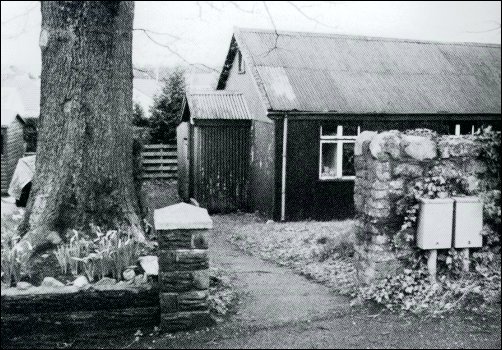St Thomas Church
Wernoleu, Pontamman, AmmanfordAlthough Ammanford, like the rest of Wales, is overwhelmingly Non-conformist in worship, by 1915 there were five churches serving the town's Anglican worshippers, part of the Church of England, as it was then called. In 1920 the Welsh churches were disestablished, or given independence from the Church of England, taking the opportunity to rename themselves the Church in Wales in the process. In return for this freedom from English control the new Welsh church also gave up the right for its six bishops to have an automatic seat in the House of Lords like their English counterparts, hardly a great loss. The Church in Wales, however, remains within the Anglican Communion and in 2001 the Archbishop of St Davids, Rowan Williams, a Welsh speaker from the nearby Swansea Valley, became Archbishop of Canterbury and head of the world-wide Anglican Communion. The Archbishop of Wales, unlike his counterpart in Canterbury, is not a permanent position but is chosen in rotation from the six Welsh Bishops.
The five Anglican churches in the Ammanford area in 1915 were:
– St David's, Betws, built in the 13th century, though on a sixth century site. – St Michae'ls and All Angels, Wind Street, Ammanford, built in 1885, with a church hall added in 1900. – St Thomas, Wernoleu, built in 1890. – St John's Church, Station Road, Tirydail, opened 1911, closed 1974. – All Saints, Church Street, Ammanford, built in 1915 with the clock tower added in 1923. St Davids and St Michaels hold their services in Welsh, the others in English. There is also a church in Llandybie just two miles north of Ammanford.
St Thomas, a modest mission church, was built on land which one time formed part of the country estate of Wernoleu in Pontamman, to serve the Anglican population of High Street, Pontamman, Hopkinstown and Maesquarre Road. Wernoleu house and its lands were owned and occupied between 1885 and 1903 by one Reverend Thomas Davidson BA. A plaque on the wall of St Davids church, Betws, commemorates his tenure in the parish. He had been the Rector of Ashmore in Devon prior to taking residency in Ammanford and it's believed he and his family were very much involved in the establishment of St Thomas church sometime around 1890.
The first building was originally conceived as a temporary structure and constructed accordingly with timber framework and corrugated iron cladding. Palatial is a description no-one has ever applied to the church and as late as the 1980s the heating system consisted of a free-standing, cast-iron, cylindrical stove with a flue pipe extending up to the roof. The church had been built in the reign of Queen Victoria and remained very much of that era for another hundred years. On occasions, inclement weather conditions caused a downdraft in the flue and the resulting smoke-filled room made it difficult for the congregation to see their minister or the minister to see his flock. Still, a dedicated community spirit kept the church and its Sunday school open for over a century.
The original corrugted iron clad mission church of St Thomas After the departure of the Davidson family, Wernoleu and its grounds were bought by the Ammanford Colliery Company as the residence for its managing director, Mr Ernie Hewlett. The former gentleman's residence was later used for the same purpose by the Amalgamated Anthracite Collieries Limited when they bought up the Ammanford Colliery Company in 1923. On nationalisation of the mining industry in 1947 the nation, in the form of the National Coal Board, acquired the premises and Wernoleu became the residence of the manager of NCB Area Number 9. In 1965 the NCB finally sold Wernoleu house on the open market and it became a country club and hotel, eventually renamed from Wernoleu to Ammanford Hotel in 2003.
During all these changes St Thomas continued unchanged in its original role as a place of Anglican worship. Ernie Hewlett took a strong interest in the little church, as did many other pillars of the local community.
The temporary building, however, proved to be more permanent than anticipated, with the result that the structure deteriorated badly over the century of its life, its countless temporary repairs struggling to hold back the ravages of time. It was when a section of the wooden floor collapsed during a church service that a decision was taken to rebuild rather than repair. A committee – the Friends of St Thomas – was formed and within a year had raised sufficient funds to build a completely new building, a large part of the construction work being carried out voluntarily by church members.
On the 3rd December 1995 the first service was held in the new building, a tribute to community spirit at a time when most other places of worship in the area are experiencing a collapse in membership, and with some churches and chapels even disappearing altogether before the bulldozer's advance.

